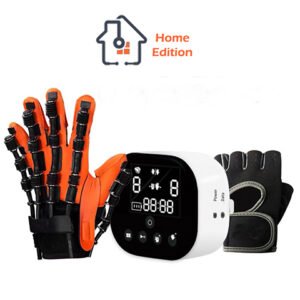Hand Rehabilitation for Leprosy
Leprosy is a contagious disease that causes severe, disfiguring skin sores and nerve damage in the arms, legs, and other body parts. Leprosy has existed from the beginning of time. People have been affected by outbreaks on every continent.
However, leprosy, sometimes known as Hanson’s sickness, is not a particularly contagious condition. You can only get it if you come into close and repeated contact with a leprosy-infected person’s nose and mouth droplets. Leprosy is more common in children than in adults.
Mycobacterium leprae, a slow-growing kind of bacteria, causes leprosy (M. leprae).
The actual mechanism of leprosy transmission is unknown. When a person with leprosy coughs or sneezes, droplets carrying the M. leprae germs may be transmitted and inhaled by another person.
When it comes to symptoms, Leprosy primarily affects your skin and peripheral nerves, which are located outside of your brain and spinal cord. Your eyes and the delicate tissue lining the inside of your nose may also be affected.
Leprosy is characterized by disfiguring skin lesions, lumps, or bumps that persist for several weeks or months. The lesions on the skin are light in hue.
There are a variety of pharmacological treatments available to address the effects of this disease; nevertheless, non-medicinal physical therapy is at the top of the treatment list.
Physical treatment, in reality, strengthens muscles, reduces and avoids contractures, restores and preserves joint mobility, maintains skin tone, integrity, and elasticity, and prevents deformities in people with leprosy.
However, a prevalent misconception in this regard is that physical therapy takes place only in a hospital or clinical setting. Fortunately, thanks to the cutting-edge technology of the Rehabilitation Robot Gloves: SIFREHAB-1.1 and SIFREHAB-1.0, it may now migrate to home therapy.
These hand rehabilitation devices act in both flexion and extension to mobilize the afflicted joints. Even if the patient has no active residual movement, passive mobilization can be used in the early stages of treatment. Fortunately, the software allows for a wide range of therapy customization options.
In the same way, the SIFREHAB-1.0 Portable Rehabilitation Robotic Gloves would increase force in the direction the user wishes to move (open or close his fingers to avoid contractures and promote skin elasticity).
The following home rehabilitation equipment can also give resistance in the opposite direction, which can aid in movement stabilization and hand muscle tone exercises. To put it another way, the design might be used for a variety of needs and users, including Leprosy patients.
SIFREHAB-1.0 and SIFREHAB-1.1, in a nutshell, provide a low-cost, safe, intensive, and task-oriented rehabilitation through home therapy, which can improve treatment efficacy by incorporating the recovery of daily-living-activity functions as well as a home environment alteration.
To summarize, people suffering from Leprosy disease who is still unsure about the best treatment plan to follow should consider the SIFREHAB-1.0 and SIFREHAB-1.1 Rehabilitation Robot Gloves as the best options because they will help them improve their symptoms over time by performing hand therapy exercises at home independently.
Reference: Hanson’s sickness


